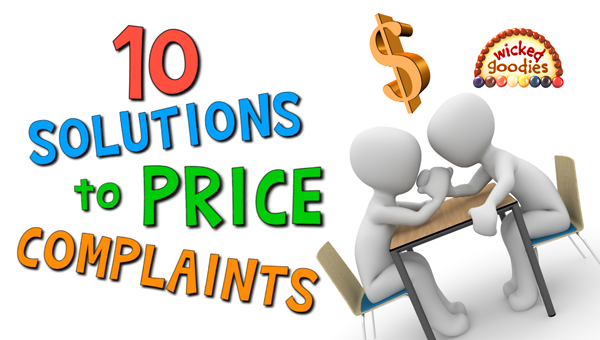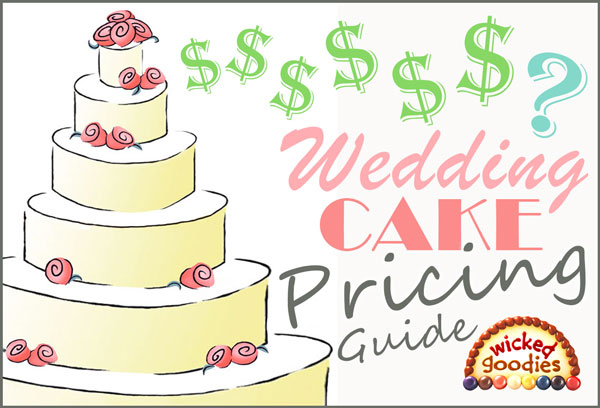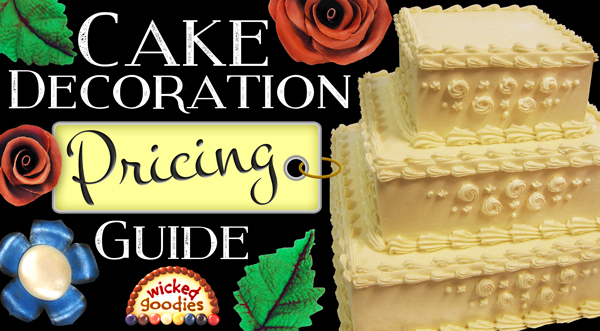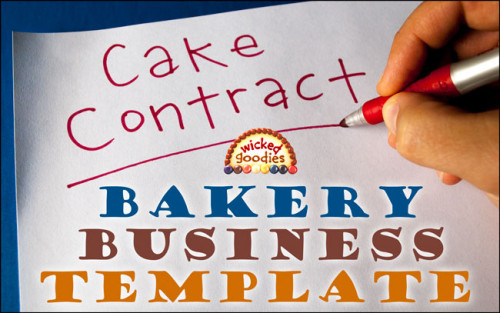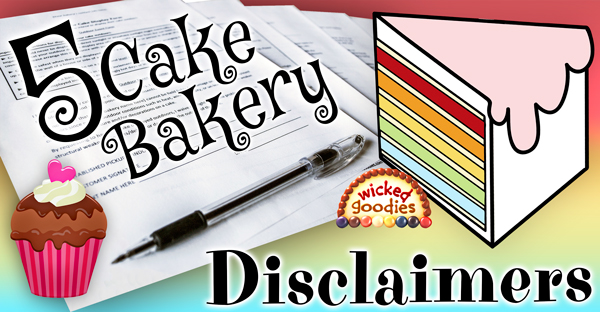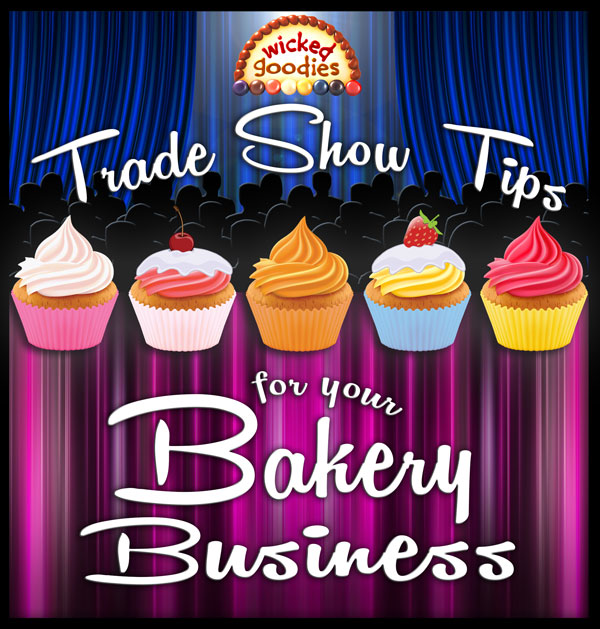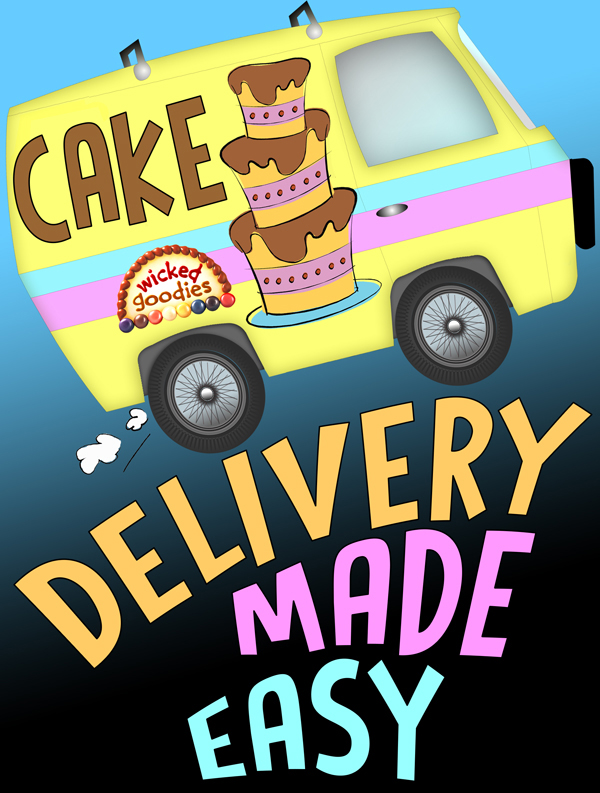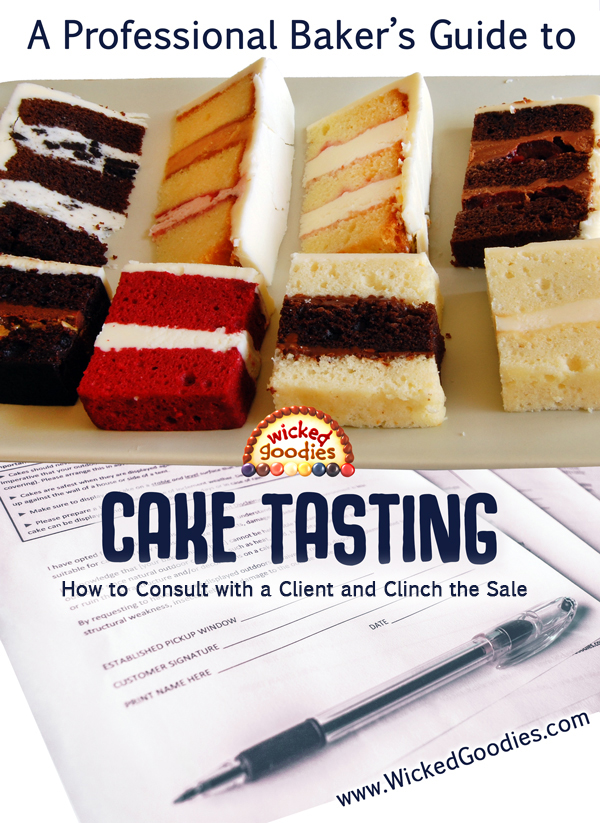
Why Conduct a Cake Tasting?
The cake tasting is a sales technique used to attract the business of brides, grooms, or host of a large event. When the event is a wedding, this part of the planning tradition is a rite of passage during which the engaged couple samples cake flavors and picks a cake design. Bakers are expected to pamper the customer in exchange for securing their business.
Pros for Offering Cake Tastings
- It gives the baker an opportunity to get to know the client. This is helpful when it comes to customizing the cake.
- It gives the baker a chance to educate the client. This is helpful when it comes to setting expectations.
- It’s easier for everyone to discuss colors and 3D concepts when you’re in person and can use props, sketches, color swatches, and examples to explain what you mean.
Cons for Offering Cake Tastings
- They are time consuming.
- They expend resources, requiring that you provide samples of your entire cake menu.
- A successful sale is not guaranteed.
Who needs a cake tasting?
Cake tastings and in-person cake design consultations are only necessary for serious shoppers who want to place large orders. Events like weddings where 100 or more guests will be in attendance are appropriate for tastings.
Events with less than 50 guests do not require tastings or in-person consultations. Those kinds of orders can simply be handled over the phone.
Charging for Cake Tastings
Highly sought-after bakeries charge a fee for conducting cake tastings, especially when the chef is a known celebrity. That is not the norm. Most bakeries don’t charge for tastings so it’s standard practice to provide them for free. If you are a beginner or intermediate baker who charges a fee, you risk losing potential business.
Cake Tasting Fee as a Deposit
If you do charge a fee for the cake tasting and the customer then hires your services, it’s standard practice to subtract that fee from the cost of the cake. Again, this is only recommended for highly sought after bakeries.
Where to Offer Cake Tastings?
Ideally, conduct the tasting at your place of business. If you work from home, you can meet clients at a café or at a rented office space.
What to Wear
Wear a clean chef coat with your name embroidered on it. If you have long hair, tie it back. Wear black slacks and clean shoes.
What to Bring
Cake Samples
Be decisive about what you have to offer. It doesn’t have to be your whole menu. Customers get confused with too many choices so limit the number of samples from four to eight flavors of cake. Six is a good number.
Include a variety of cakes, including at least one vanilla or simple berry cake, one chocolate, one nut, etc. Certain flavors are more universally liked: vanilla, strawberry, raspberry, lemon, apple, and almond, so try to focus on those. Other flavors are “polarizing,” which means they are delicious to some but unsavory to others: coconut, cherry, mint, and coffee for instance. Since weddings include a large number of guests, it’s better to offer basic flavors that are not too polarizing.
Cake Samples Made Simple
A full cake tasting menu can be maintained at all times by freezing one of every kind of cake on your menu then slicing off samples to order. They can also be collected from leftover scraps made from carved cakes. Don’t worry, frozen cake samples taste fine if handled correctly. Read more about frozen cake here.
Store all samples in plastic wrap within sealed containers. To create a tasting plate, start with a large knife with a flat blade. Run it under hot water then dry the blade with a towel. Working with a block of frozen cake, slice off a sliver of the exposed surface, throw it out, then cut a slice that is fresh on both sides. Slicing cake while it’s frozen results in a cleaner cut.
Cover the sample plate with plastic wrap then allow the frozen cake slices to thaw for at least a couple of hours before serving.
Cake Tasting Consultation Toolkit
- Laptop or mobile device
- Pens
- Pencils
- Paper and templates for sketching
- A printed copy of your menu
- Your cake pricing and sizing data sheets
- Color deck
- Order Forms
- Disclaimer Forms
- Credit card reader (square or paypal account)
- Receipt book
- Forks
- Napkins
- Water (optional: plus coffee and tea)
- Glasses/mugs for beverages
The Color Deck
If you are a baker who keeps track of a lot of cake orders, this trick is for you. In order to keep all the colors straight between your wedding cake orders, use a color fan deck.
The color fan deck, normally used in paint and hardware stores, includes every possible color with names and numbers as reference.
During a cake design meeting, when a client talks about a specific set of wedding colors like “ivory and sage” and you want to be sure you agree on exactly what sage means, you can ask her to locate the color within the color fan deck. Once the client has chosen it, make note of the name and number of that color on the order sheet. Months or weeks later, when it comes time to actually make that cake, you will be able to reference exactly which color/s were chosen without having to rely on memory.
HOW to Conduct a Cake Tasting?
My #1 Best Tip
Don’t serve the cake right away. You will maintain better command of the meeting if you delay the tasting portion. First, exchange all pertinent information. Discuss the logistics. Prepare an official quote. Negotiate until the customer is satisfied with the proposed design and cost.
Only after all the logistics are agreed upon should you serve the cake. Then wait…just wait for that moment after the client has enjoyed the dessert when they are smiling and cruising on a sugar high to ask them for a deposit. Your chances of clinching the sale are the best at that time.
Stages of the Cake Tasting Consultation
Pre-Screening
Since almost everyone wants a free cake tasting but your time and resources are finite, you reserve the right to first screen your clients over the phone before approving an appointment. The following checklist will help you determine if it’s a good business match and if a cake tasting is required. Keep in mind that people who are in the market for elaborate cakes do shop around, so you will field a large percentage of inquiries that do not necessarily result in an order. Don’t take this personally. Dead end calls are part of doing business.
Questions to Ask Over the Phone BEFORE Scheduling a Cake Tasting
Contact Info
“What is your full name, phone number, and email address?”
Capture this info right away, for your records.
Logistics
“What is the date and time of your event?”
Make sure you are available.
“How many guests do you expect to feed?”
If they say the guest count is under 50 (or whichever number you decide is your threshold), then they are not eligible for a tasting. But you’d be happy to discuss details over the phone.
“Where is the event venue?”
Calculate your distance to the venue. Is it a feasible distance for a cake delivery? Calculate the delivery cost so that you can add it to your estimate. Factor in if you have time to deliver this cake in addition to the other orders that you may have on that date.
Payment
“Who is responsible for payment?”
Sometimes, a parent or relative has agreed to gift the cake. If it’s a corporate event, the company will be responsible for the cost. In those cases, the customer usually has more leeway with the cake budget. When the customer makes the purchase themselves, they are typically more cost conscious. With these considerations in mind, you can better tailor your sales approach.
Budget
“Are you working within a specific budget?”
For corporate events or events where a third party is responsible for payment, the client will probably have a budget in mind. If this is the case, you will need to know where the jumping off point lies. Oftentimes, the customer doesn’t have an established budget or they aren’t comfortable talking about price. In that case, start with the design idea, generate quotes, and gauge what they are willing/able to pay based on the choices that they make.
Design
“What is the proposed cake idea?”
If the customer already knows what they want, that’s helpful. Does this idea fall within your skill range? If so, request photos of the idea for your files.
If the client doesn’t yet know what they want for a cake design, ask them to do some research before their appointment. Tell them: “Your homework is to go online and search for images of wedding cake designs. Print out photos of styles that appeal to you. Circle the parts you like best. Draw an X over the parts you don’t like. Jot notes in the margins. Bring the images to your appointment.”
If the client seems helpless or ambivalent about the design, it’s either the kind of person who has a hard time making up their mind or the kind of person who can’t easily visualize three dimensional objects. It’s fair to expect a longer consultation will ensue, as a result.
Cost
“Does my estimated cost fall within your budget?”
If the cake design is already determined, consider providing a rough estimate of the cake cost over the phone. Be sure to emphasize that your estimate is not a binding agreement. If your price estimate is not within the client’s budget, adjust the options, exploring ideas such as side cakes. If your budget options are still not affordable enough for the client, kindly refer them to a cheaper bakery.
If the cake design has not yet been determined, provide a cost window for the client to consider based on the number of guests that are attending the event. “Our basic wedding cake designs range from $4.50 to $5.50 per serving. Since your event includes 100 guests, you can expect the cost of a basic cake to range between $450 and $550 plus the cost of delivery. The more elaborate the design, the higher the cost will be. If you have a proposed budget, I can give you a sense of what kinds of shapes and styles are possible.”
Competition
“Are you considering other bakeries?”
This is a good question to ask because it gives you a sense of how widely the customer is shopping around. For instance, if they say they have three other cake tastings scheduled then you know you have a 25% chance of getting the job. Or if they mention that two of the other tastings involved poor service or lousy cake samples, then your chances of securing the order are greater. This information helps temper your expectations and avoid non-serious shoppers.
By asking this question regularly, you can also learn valuable information about the customer experience at the other bakeries in your area, including which ones give good/bad tastings and why. By keeping your thumb on the pulse of the local market, you can give great referrals to your customers.
Allergies and Preferences
“Are there any food allergies or preferences that we should know about?”
If a client has a food allergy but your bakery does not specialize in allergen free food, kindly refer them to a bakery that does. If you do decide to accommodate an allergen-free order, charge a fee of $1 or more per serving and require the customer to sign a Food Allergy Disclaimer.
Alternatively, if the customer requests a particular flavor that is not on your menu simply because of preference, also charge a fee of $1 extra per serving and require them to sign a Custom Cake Flavor and Special Request Disclaimer. This fee applies because researching and testing new recipes takes time. Not all recipes work in large cake form so you incur a greater risk of failure. Using the disclaimer will help protect you from liability in case the proposed recipe does not work out.
If you screened the client over the phone then you should already have gathered some of the following information in your database. At the very beginning of the consultation, make sure all the fields on the order form are properly filled out. Follow this list of questions to cover all the important details and help narrow down the official cost and style of the cake.
Confirm Client Contact Info
- Client’s first and last name
- Phone number
- email address
- Guest of honor’s full name
Confirm Event Logistics
- Number of guests attending
- Date of the event
- Start time of the event
- Is delivery required?
Customers often look to cut costs. One of the obvious ways to save money is to waive the delivery charge by picking up the cake themselves. When it comes to multi-tiered cakes, especially wedding cakes, this is not recommended. Moving and transporting a wedding cake is a job meant for professionals only (for more on this topic, read my tutorial: Cake Delivery Made Easy). If the customer insists on picking up their own wedding cake, make sure they sign a Cake Pickup Disclaimer, which also includes helpful information about how they should prepare their vehicle for cake transportation.
- Cake delivery/pickup window
Aim to deliver the cake one hour before the reception starts. It usually takes no more than one half hour to set up a cake, so this leaves time for traffic delays and unexpected holdups.
Most of the time, a wedding ceremony takes place at a separate location or room from where the cake is displayed, so you will have a chance to assemble the cake during the ceremony. Every once in a while, the ceremony takes place in the same room as the wedding reception, in which case you should plan to deliver the cake even earlier, one hour before the start of the ceremony.
Alternatively, you may deliver the cake to a different room such as the kitchen, to be moved into the reception hall once the ceremony is over. However this is only feasible when the cake is small or compact. Larger cakes should not be moved after setup.
- Event venue name
- Event venue address
- Event venue contact (in case of emergency)
Party Stylings
- Venue look and style
- Overall theme of the party
- Bride’s gown color and style
- Bridesmaid dress color and style
- Groomsman suit/necktie color and style
- Table linens color and style
- Flower & centerpiece color and style
- Appetizers and main course menu
Demonstrating that you care about all the details of the party is a great way to win the client’s trust. Collecting this information also helps steer you in the direction of the customer’s overall style and preferences. If the customer wants the colors of their event clothing to match the cake, be sure to request fabric swatches or use a color deck to be exact.
These questions also help in cases where the client does not specify a budget or design preference. For instance, if they say they are forgoing a sit-down meal and opting for appetizers only because it’s more affordable, you know they are probably working within a tight budget. Then you can pitch them your most affordable options.
Cake Logistics
Top Tier
“Do you want to save the top tier for your first year anniversary?”
Some wedding couples still adhere to the old tradition of freezing the top tier of their wedding cake then eating it on their first year anniversary. When the client requests this option, it must be added on as an additional cost since the top tier will not be served at the reception.
When the top tier is to be saved, most bakeries offer a complementary box for transporting the cake. The best place to put the box is under the cake table or in the hands of the person who will cut the cake. Ask the client to inform their event coordinator and caterer of the fact that the top tier will be saved, as oftentimes this request gets forgotten.
Display
“Is there a cake table?”
This is always a good question to ask, just in case. Experienced venue managers and event coordinators should already have this detail arranged but in cases where the wedding is more DIY, the cake table may be overlooked. Make sure there is a table with linens available for the cake. It should be smaller than the dining tables. Big cake tables dwarf the cake, making the display less attractive.
“Where in the reception area will the cake be displayed?”
It’s helpful to know where you need to go when it’s time to deliver the cake but this is also important in terms of determining if the cake is going to be displayed somewhere in the center of the room or up against a wall. If the cake is going up against a wall, then you should line all your tiers up so the best sides face forward and the worst parts such as seams or blemishes face the back. If the cake is to be displayed in the middle of the room such that customers have a 360-degree view of it, then it’s better to stagger the seams.
Presentation
“Will the cake be served tableside or buffet style?”
Clients with bigger budgets have the option to serve their dessert tableside. That means wait staff will deliver every plate of food to every guest’s seat. When the cake is served tableside, the number of servings required must equal the total number of guests at the event so no one is shorted a piece of cake.
Clients who have tighter budgets or a more casual event in mind may choose to serve their cake buffet style. When a cake is served this way, it is not necessary to match the number of cake servings with the number of guests in attendance. The reason for this is that not everybody eats cake. Some people will be too busy dancing or socializing to take a slice, so you can safely subtract 10–15% of the number of servings from the total number of expected guests. You may suggest this option when the client is looking to cut costs.
Servings
“What is the actual number of servings needed?”
In addition to how the tableside versus buffet style options affect the number of servings needed, there are sometimes other considerations. For instance, will there will be other desserts available besides cake? If so, the client can afford to subtract portions from the order. This is another way the client can save money if needed.
Cutting Ceremony
“Will there be a cake cutting ceremony?”
If the answer is yes, which it usually is, inform the client how to best cut into their cake. For instance, if the cake is heaped with a cascade of chocolate flowers or decorations, instruct them to slice somewhere in the back, where the finish is more bare. If they want to save the top tier, remind them to cut into a lower tier. Don’t assume this logic will occur to every customer.
Cutting Fee
“Is there a cutting fee?”
The cake-cutting fee is an additional service charge imposed by the venue or caterer that is typically added in dollars to the net cost per guest at an event. A typical cutting fee is usually around $1–$2 per head. It is not the responsibility or concern of the bakery but it’s always worth discussing this potential fee with the customer. I call the cutting fee a “hidden cost” associated with a wedding cake because it is an unexpected labor charge.
The reason why this fee exists is because there is labor associated with cutting and serving a wedding cake, which falls on the company that serves food at the event. First, there is the person who cuts the cake. Cutting a wedding cake is an involved process that requires time and skill to do correctly. Second, there is the labor involved with plating the cake, serving the cake, collecting the cake dishes and utensils, then cleaning those dishes and utensils. Sometimes, each cake serving plate is also garnished with fruit or a drizzle of chocolate or coulis for a more upscale presentation, which requires additional time and materials. For all these reasons, it makes sense that venues or caterers charge for the cutting service.
Help the customer understand the reason for the cutting fee and remind them to anticipate it, even though the charge will not come from you. They will thank you for forewarning them about it.
Cake Design and Cost Estimate
Follow this link for my Wedding Cake Pricing Guide
Follow this link for my Cake Decoration Pricing Guide
Know Your Skill Level
The cake prices listed in the link above are based on a professional skill level. Here is a quick breakdown of a range of decorating skill levels from hobbyist to professional with approximate hourly rates comparable to what one would earn in the food industry. Note that these rates do not apply to production elements of bakery work such as batter mixing, baking, and cleaning.
Hobbyist
You have made at least ten custom cakes for friends and family because you love doing it. You get your knowledge from books, television, YouTube, and blogs. You are learning as you go. Since you are a beginner, you are the equivalent of an intern at a bakery (i.e. no pay or minimum wage). You might consider offering your time for free, charging customers only for the cost of supplies and ingredients as you work to gain experience.
$0 – $8/hour
Novice
You started as a hobbyist but now you’ve also sold a few cakes out of your home. You never worked in the food industry before but you have a knack for baking and now people are willing to buy your cakes.
$8-$10/hour
Semi-Pro Home Baker
You’ve been running a small baking business out of your home and have sold at least 25+ cakes on your own including at least three wedding cakes. Your work is not perfect and not everything has gone smoothly; you’re still learning by trial and error, but your product is improving with every order. You have a Facebook page for your business and possibly a website.
$10-$12/hour
Naturally Gifted
You have no professional experience but your work is exceptional to the extent that some of your cake photos have already gone viral online. When faced with any cake design challenge, you know how to improvise. You are as talented as some professional cake artists but your practical experience is minimal. You should price your cakes conservatively since you are still in the learning phase.
$10-$12/hour
Industry Experienced
You have six or more months of commercial bakery experience working under a professional pastry chef. You are comfortable piping and frosting a cake quickly on a turntable. Your work is tidy and consistent.
— OR —
You have sold over fifty cakes via your home baking business including at least ten wedding cakes.
$10-$15/hour depending on level of talent
Professional
You are an experienced cake decorator with at least three years of professional bakery experience. You have frosted over 100 cakes on a turntable, you are comfortable with most or all of today’s most popular cake decorating mediums including buttercream, whipped cream, ganache, chocolate glaze, fondant, modeling chocolate, gumpaste, sugarpaste, royal icing, and you are confident in your abilities.
$15-$20+/hour depending on level of talent
Offering Choices
Clients are often overwhelmed by the price of a wedding or specialty cake. It will likely be more than they ever spent on a dessert in their entire lives. In order to lessen the impact of the cost estimate,
I recommend using The Three Tier Method: A Cake Sales Trick to help increase your chance of clinching the sale.
Cake Serving
The tasting should come directly after the cost negotiation as a reward. This will take the sting right out of the whopping dollar amount. Having earned the wait, the client/s should be excited and relieved when this time comes.
Collecting Data
Require the client/s to write down their first impression of each flavor with a rating of 1–5 based on their preference. If there is more than one client doing the tasting, they should do this separately without comparing notes. The tasting phase should be casual and organic so clients have a chance to pick their preferences without bias.
At the end of the tasting, ask them to compare notes and decide what to choose according to their combined ratings. This will streamline the decision-making process. Over time, this system will also give you a good sense of what flavors on your menu are most popular and why.
Helping Clients Pick Flavors
When it comes to multi-tiered cakes, most bakeries allow customers to choose a different flavor for each tier with no surcharge. For weddings and large parties, supplying a variety of flavors for guests to pick from is recommended. Cottage bakers who expect to compete with the professional bakery industry should provide the same complementary service.
When it comes to supplying cake flavors for large parties, customer preferences should be combined with general preference. So if the bride prefers rich chocolate cake, be sure to assign that flavor to the tier that will be sliced in the cutting ceremony. For the other tiers, help the client pick flavors that provide a good balance for guests. One chocolate-based cake tier, one vanilla-based tier and one fruit-based tier is a good way to go when multiple cake tiers are involved.
Collecting the Deposit
Immediately after the tasting, clinch the sale by asking for a deposit on the order. There is a 5–10 minute window just after the clients eat cake when they are more likely to commit. All the lead-up beforehand is in preparation for this window of opportunity. If you have followed all the steps herein, you should be ready for it.
What if they don’t make a deposit?
That’s okay. It happens. Wait one week after the appointment and follow up via phone or email. If you don’t hear back from the customer, they probably decided to go with another bakery. If they are kind enough to inform you of this fact, do take the time to thank them for letting you know. Professionalism and positive communication are always worthwhile, even when you didn’t get the job.
Collecting Payment Tips
Food is perishable and custom cakes have zero resale potential. For that reason, payment should always be collected up front.
It helps to collect payment in the form of credit card. Keep in mind that this involves a 3% fee on your end. You may include this fee in the charge if you want. Just make sure to explain the reason for this fee to the customer.
Square method and Paypal are two popular options for collecting mobile payment. They also involve a 2–3% fee. Note that Paypal and Square can be finicky on mobile devices so make sure your program is operational before your meeting.
If you don’t have a digital invoicing system, you may use a receipt booklet to document payments. Look for the kind that makes carbon copies for you. When a client pays any portion of their order in person, fill out one of the slips so you have a record of the transaction. Give a receipt to the customer and staple the original copy to your records.
Signing of Contracts and Disclaimers
By this point, the contract should already include all relevant information on the order. If you began with a preliminary quote, you may copy and paste the data fields directly into your contract form. Now it’s time to print out the official order form and collect the customer’s signature. If any disclaimers are necessary, collect signatures on those as well at this time. Be sure to supply the customer with their own copies of these forms for their records.
If you are handling your order over the phone or if the client delays signing the contract, require them to fax or scan and email their signed forms to you when they are ready. Inform them that this is necessary for confirming the order.
Cake Contract
Follow this link to learn How to Write a Cake Contract
Cake Disclaimers
Follow this link to get 5 Bakery Disclaimer Forms
Next Steps
At the end of the cake consultation, inform the customer of what comes next.
Remind them how much time they have to make changes on the order
Now is the time to point out that the client may not make any changes to the cake order within 21 days of the event. You should also mention that from now until the deadline, significant changes may be subject to an added fee.
Remind them when their final payment is due
Remind them that the final payment is due no later than 14 days before the event. Unless the client suffers an emergency such as injury or death in the family, there should be no exceptions to this rule.
Agree on how you will contact them to collect final payment
Establish which mode of communication the client would prefer from here on out regarding communication and payment. Tell the client that you will be contacting them one week before the final payment deadline arrives, i.e. three weeks before the event. That way, the customer still has time to mail a check and the check still has time to clear before you get started on the cake. Do not wait until the deadline has already arrived to contact the client as this could cause a delay in prompt payment.
Tell them what to expect on the day of their event
Confirm once more what time you expect to arrive and how long you expect set-up to take. If the event is a wedding, you might mention that you will likely not see the client at the venue as they will likely be at the ceremony or getting dressed while you are on site.
Confirm your reliability
Assure the client that you will remain reachable by phone during the event in case any issue arises with the cake.
Following Through
When the client makes full payment in advance such that no further business remains, it is good policy to check in with them two weeks before the event to let them know their order is still on track. Radio silence might leave them wondering if you forgot about them. Here is an example of an email check-in.
Hi Elena,
Your wedding day is coming up! I’m checking in to let you know that I will begin initial preparations on your wedding cake soon. If you have any last minute questions, please do not hesitate to contact me.
Kristen
Conclusion
Just as with learning how to make cakes, client consultations also require practice to master. Do not get discouraged when a meeting doesn’t result in an order. That is normal in the bakery business.
Properly screening clients goes a long way in budgeting your own time. Following the steps in this tutorial should increase your potential for success.
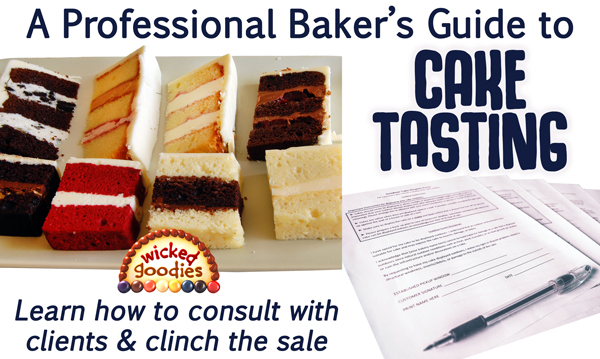
Related Material
10 Solutions to Price Complaints
